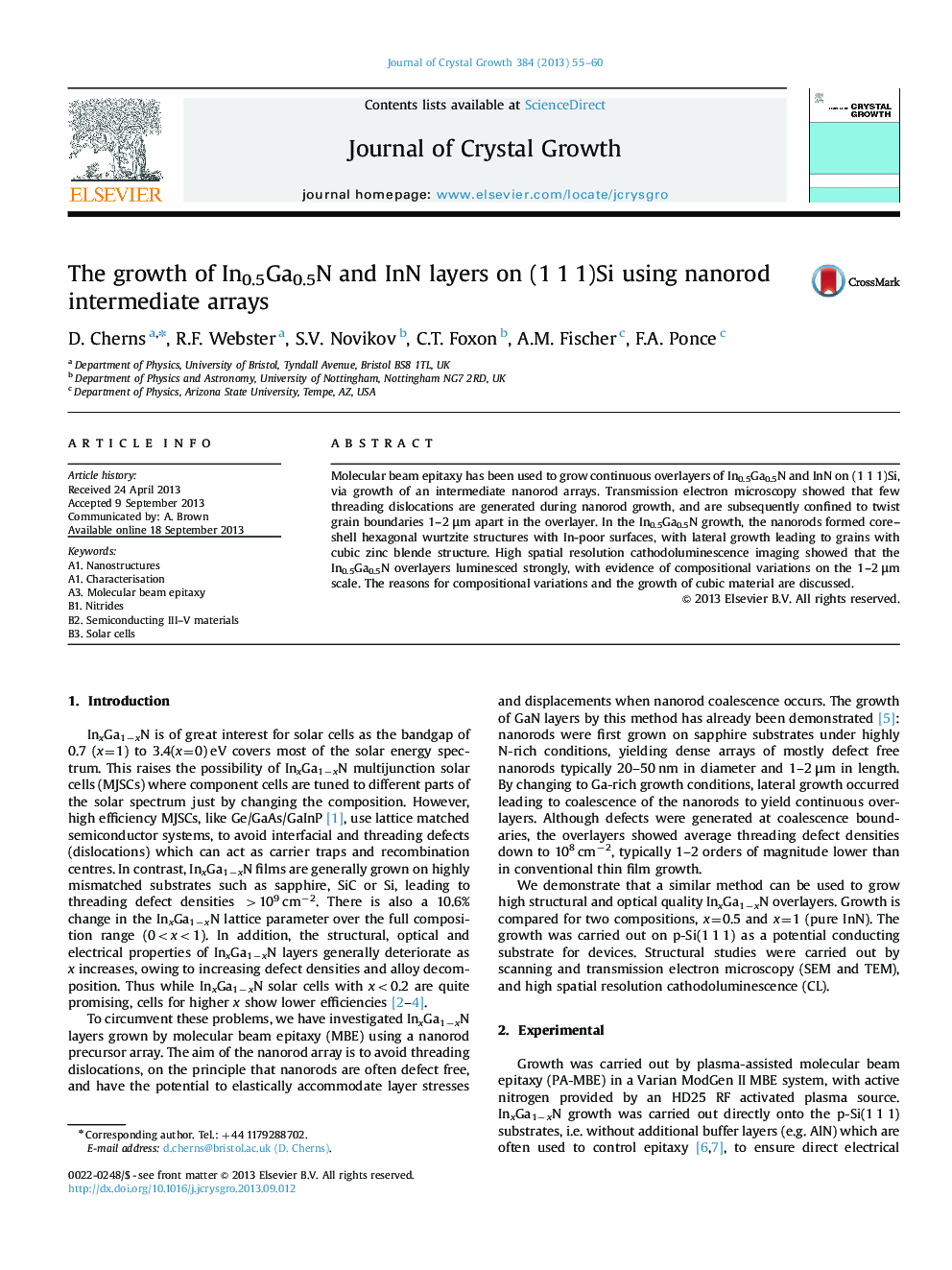| Article ID | Journal | Published Year | Pages | File Type |
|---|---|---|---|---|
| 1790700 | Journal of Crystal Growth | 2013 | 6 Pages |
•InGaN layers have been grown by MBE on (1 1 1)Si using nanorod intermediate arrays.•The InGaN layers had low densities of dislocations and high cathodoluminescence.•Lateral growth of In0.5Ga0.5N showed a hexagonal to cubic transition.•Cathodoluminescence mapping showed evidence of compositional variations.•The nanorods showed evidence of a core–shell structure.
Molecular beam epitaxy has been used to grow continuous overlayers of In0.5Ga0.5N and InN on (1 1 1)Si, via growth of an intermediate nanorod arrays. Transmission electron microscopy showed that few threading dislocations are generated during nanorod growth, and are subsequently confined to twist grain boundaries 1–2 μm apart in the overlayer. In the In0.5Ga0.5N growth, the nanorods formed core–shell hexagonal wurtzite structures with In-poor surfaces, with lateral growth leading to grains with cubic zinc blende structure. High spatial resolution cathodoluminescence imaging showed that the In0.5Ga0.5N overlayers luminesced strongly, with evidence of compositional variations on the 1–2 μm scale. The reasons for compositional variations and the growth of cubic material are discussed.
